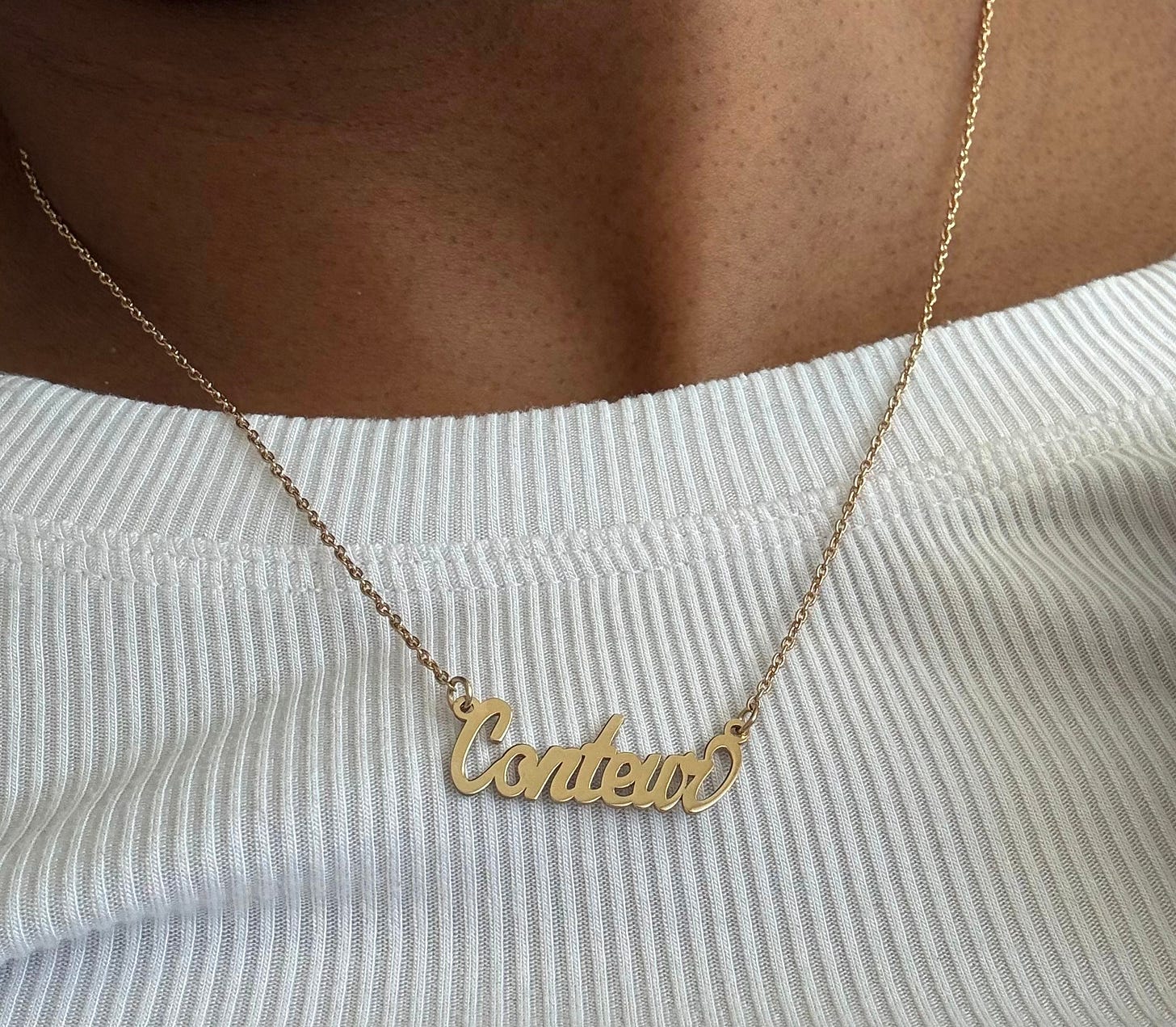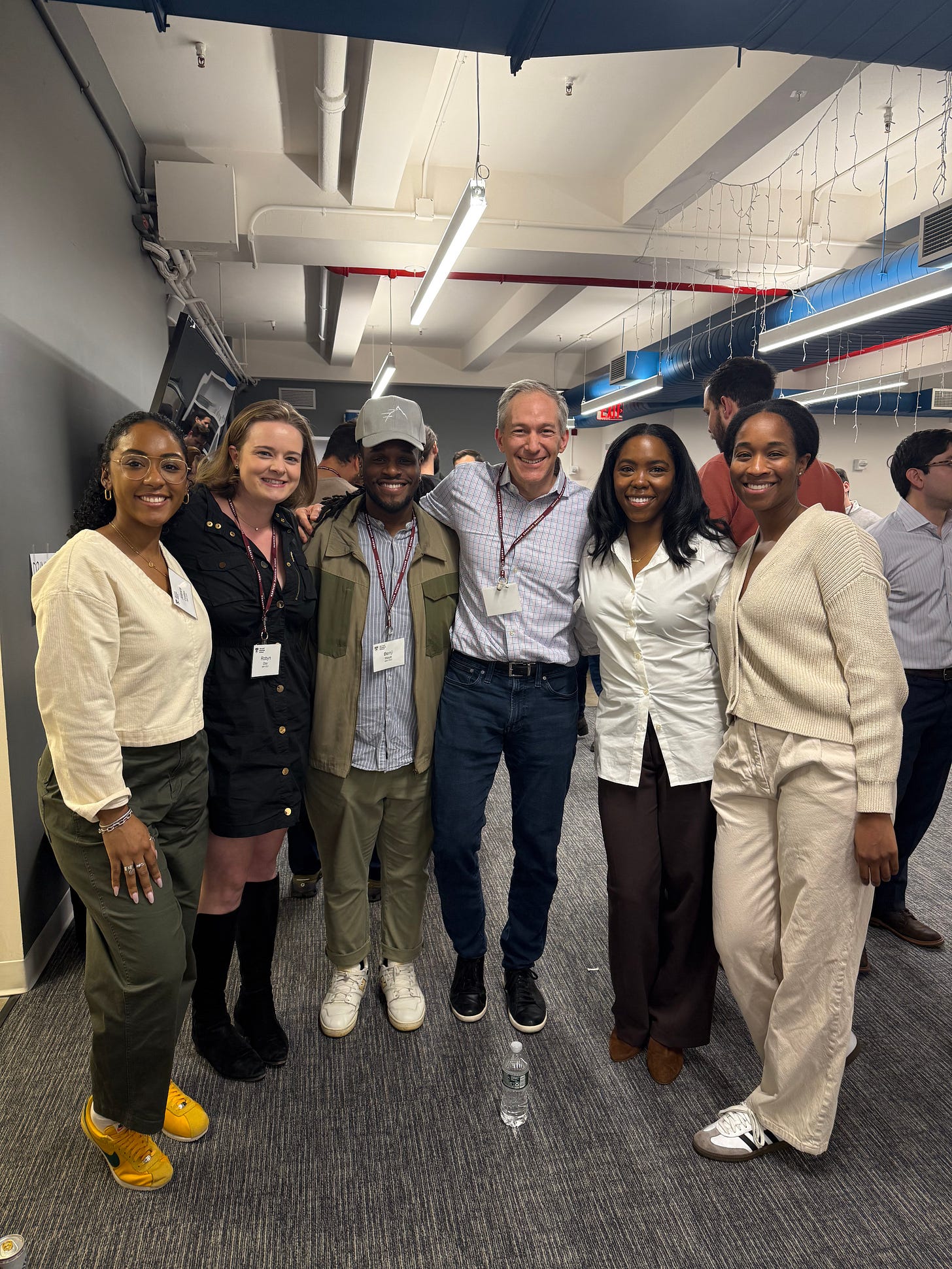Me after ChatGPT told me about myself.
Hey Everyone,
If you want a data-driven analysis on your blind spots, you’re in the right place. I’m not sure who started this trend, but I saw a creator recommend putting the below prompt in ChatGPT, and I immediately had to do the same. The result? It felt like I was talking to that friend who’s always a little too honest, but often not wrong.
“Now that you can remember everything I have typed here, point out my top 5 blind spots.”
In the spirit of vulnerability, here’s what Chat had to say about me:
You sometimes over-refine messaging at the expense of speed or simplicity
You lead with credibility but occasionally underplay boldness (I lean on being “professional and approachable” but could dial up authority or provocation)
You ask the right strategic questions, but often wear every hat
You think in frameworks, but sometimes miss the punchline (I explain the why, but sometimes miss the “so what”)
You support founders + LPs with clarity, but could spotlight yourself more
I’ll tell you, the swiftness with which this output was prepared almost hurt my feelings. I thought, “dang, how long have you been sitting on this feedback?” It was clearly queued up for this precise moment.
But, seriously. Nothing in the above was surprising, but seeing these blind spots laid out with examples/context was particularly insightful because of the sheer volume of unrefined thoughts I’ve shared with this machine vs. anyone else (it’s weird when I say that out loud…). I find society tends to attach too much humanity to machine learning, but there’s a time and place for using bots to our advantage. For me, that’s extrapolating areas of growth as evidenced by my everyday writing and communication challenges. Who needs expensive executive coaching when you have ChatGPT for free?
There are two types of people in this world — those who say they want constructive feedback, but can’t handle it, and those who thrive on constructive feedback and use it to level up. Which person are you, really? And are you going to try this prompt or chill in your old ways? I know I’ll be busy working on my “so what?” points.
Quick Hits
Ulta pauses its expansion into more Target stores: This comes at a time where Target is already facing backlash with the DEI boycott and lessened foot traffic.
Weight Watchers prepares for bankruptcy: The rise in weight loss drugs and failure to attract younger consumers put downward pressure on the business.
Harry’s parent rebrands to Mammoth Brands: The umbrella company for Harry’s, Flamingo, and Lume, is positioning itself for further expansion. Harry’s is the largest CPG company built in the past 20 years, and will only continue to add complementary brands to its portfolio.
SZA launches “Not Beauty” beauty brand: Another day, another celebrity beauty brand.
Lyft expands into Europe with FREENOW acquisition: This marks Lyft’s first expansion beyond the U.S. and Canada.
The Latest
Dream Ventures Welcome Dinner
I stopped by the Dream Ventures accelerator welcome dinner to support two of my favorite angel investors, Kelley Arena and Annie Evans. Kelley and Annie are powering the female angel investor system by bringing more women onto cap tables. They also support female founders at the early stages of fundraising through their accelerator. There was a surprise gift for those in attendance, which floored me. A former accelerator participant, Laura (Founder of OXB sweatproof jewelry), gifted everyone necklaces with their respective company names. I am IN LOVE with mine.
Community & Conversation with Jeffrey Bussgang
One of my favorite Harvard Business School professors, Jeffrey Bussgang, just released his book The Experimentation Machine: Finding Product-Market Fit in the Age of AI. Bussgang is not only an amazing professor, but also a Co-Founder & General Partner at Flybridge Capital Partners, which is purely investing in AI right now. Needless to say, he knows what he’s talking about.
HBS hosted a gathering for Bussgang’s former students in NYC. This event was at the end of a long day, but I’m so glad I trekked from BK to Manhattan to see some former classmates and the professor that empowered me to break into VC.
The Buyback Era - Taraji Reclaims Her Brand
Didn’t people learn not to mess with Cookie Lyon? Taraji Henson has officially bought her haircare brand, TPH by Taraji, from Maesa. Maesa is the brand incubator known for launching lines like Frenshe, Kristin Ess, and Hairitage. Why didn’t Taraji own her business outright to begin with? Incubators like Maesa, Syllable Studio, and The Center provide the operational backbone that helps celebrity and influencer-founded brands get off the ground with product development, supply chain, retailer relationships, etc. All of this comes at a cost — equity of course.
There’s no public information on what led to the split between Maesa and TPH, but it's likely that some combination of strategic misalignment and brand control prompted the shift. These moments often raise bigger questions around ownership, decision-making power, and long-term vision, especially for founders who are also the face of the brand.
Personally, I’m always interested in the economics behind these kinds of deals. How much equity does the founder typically hold from day one? What does a buyback structure look like in this context? And how does the value of a brand change once it's operating outside an incubator’s ecosystem?
Taraji’s move isn’t isolated. Kim Kardashian recently reacquired SKKN from Coty (via Skims), and Naomi Watts bought back her menopause-focused brand, Stripes, from Amyris in late 2023. Beyond celebrity brands, Gregg Renfrew re-acquired BeautyCounter from its PE backers, and Lisa Price did the same with Carol’s Daughter and L’Oréal.
There’s a clear pattern emerging: founders, namely women, are reasserting ownership. It’s not just about having influence, it’s about having control over what you’ve built.
The YOLO Economy
Younger generations are living for the moment…even if they can’t quite afford it. This year, nearly 60% of general admission Coachella attendees used buy now, pay later (BNPL) plans to purchase tickets. From a business standpoint, it’s a smart move: smaller upfront payments make big experiences feel more accessible.
But what does it say when people are financing leisure like it's a home purchase? Is it a strategic cash flow bridge or just a red flag?
On one hand, repayment data is promising. Klarna reports that 96% of its BNPL purchases are paid off on time or early, and many consumers see these tools as smarter alternatives to high-interest credit cards. On the other hand, the rise of BNPL for lower-cost, non-essential items points to a deeper tension: cash flow is tight, but the desire to live fully now is stronger than ever.
Between student loan repayments, inflation, and economic uncertainty, maybe BNPL isn’t about YOLO spending, maybe it’s the latest form of financial coping. The question isn’t just whether consumers can afford these purchases. It’s why so many feel they can’t afford to wait.
Into the Gloss, Out of the Money
Rumor has it Glossier is trying to raise $100M in funding, below its previous unicorn valuation. Yes, this is only a rumor, but I did notice that Forbes had published an article on this and shortly removed it from the site…noted. If the whispers are true, this is not only the sign of the times (valuation resets), but also a cautionary tale of how raising the wrong kind of capital can box a company into a corner.
Glossier’s journey since its buzzy launch hasn’t entirely been smooth. Glossier launched in the heyday of the 2010s ecommerce revolution as an online-only brand. Here’s where things went wrong. Because of its digital-first approach and use of technology on the back end, Glossier was categorized as a tech company, and thus benefited from tech-driven valuations.
The problem…it never actually built any tech. This, along with shifting consumer preferences, profitability struggles, and toxic workplace allegations, later prompted a big reset of the company, which included a new CEO, Kyle Leahy (ex. Nike).
In July 2021, Glossier’s valuation peaked at $1.7 billion, still riding its tech valuation wave. I’ll concede, there were a lot of inflated valuations back in 2021, but I digress. Even the cap table is representative of the times when Glossier launched. Investors include Sequoia, Forerunner, Thrive, IVP and Index Ventures.
Each additional $1 of VC funding raises the floor on where Glossier would have to sell to generate returns for its investors. I say returns, because investors don’t just want their money back, they want it multiplied.
With $265M already raised, Glossier’s investors aren’t just hoping for a win — they need a near-miracle. Each additional dollar of capital only raises the stakes, without changing the fundamentals of the business. Depending on the deal terms, investors that entered at valuations above $1 billion, could be fighting to recover from a mark down. Imagine your purchased your home for $120 dollars a few years ago, but could only sell it for $100 today, even with those renovations. That’s what’s happening here.
BTW, if you’re interested in diving more into the rise, fall, and rise again of Glossier, I suggest reading Glossy by Marisa Meltzer. I previously recapped the book here.
$265M is a lot of funding for a CPG company. Excessive VC $$ (especially when you’re wrongfully in tech land) can lead to a multitude of issues such as potential difficulty with an acquisition and focus on quick growth rather than long-term value creation. Businesses with less capital learn to operate leanly and efficiently (in theory).
Glossier isn’t dead, far from it. But its story is a reminder that the kind of capital you raise matters just as much as how much. In chasing the allure of tech multiples, Glossier may have traded flexibility for inflated expectations. Now, in a market that demands profitability and patience, it has to grow into a valuation it perhaps never should’ve had in the first place. The question isn’t whether Glossier is a good brand, it’s whether it can still be a good business under the weight of $265 million in venture capital.
That’s all for this week! Thanks for reading.
X
Jamie





